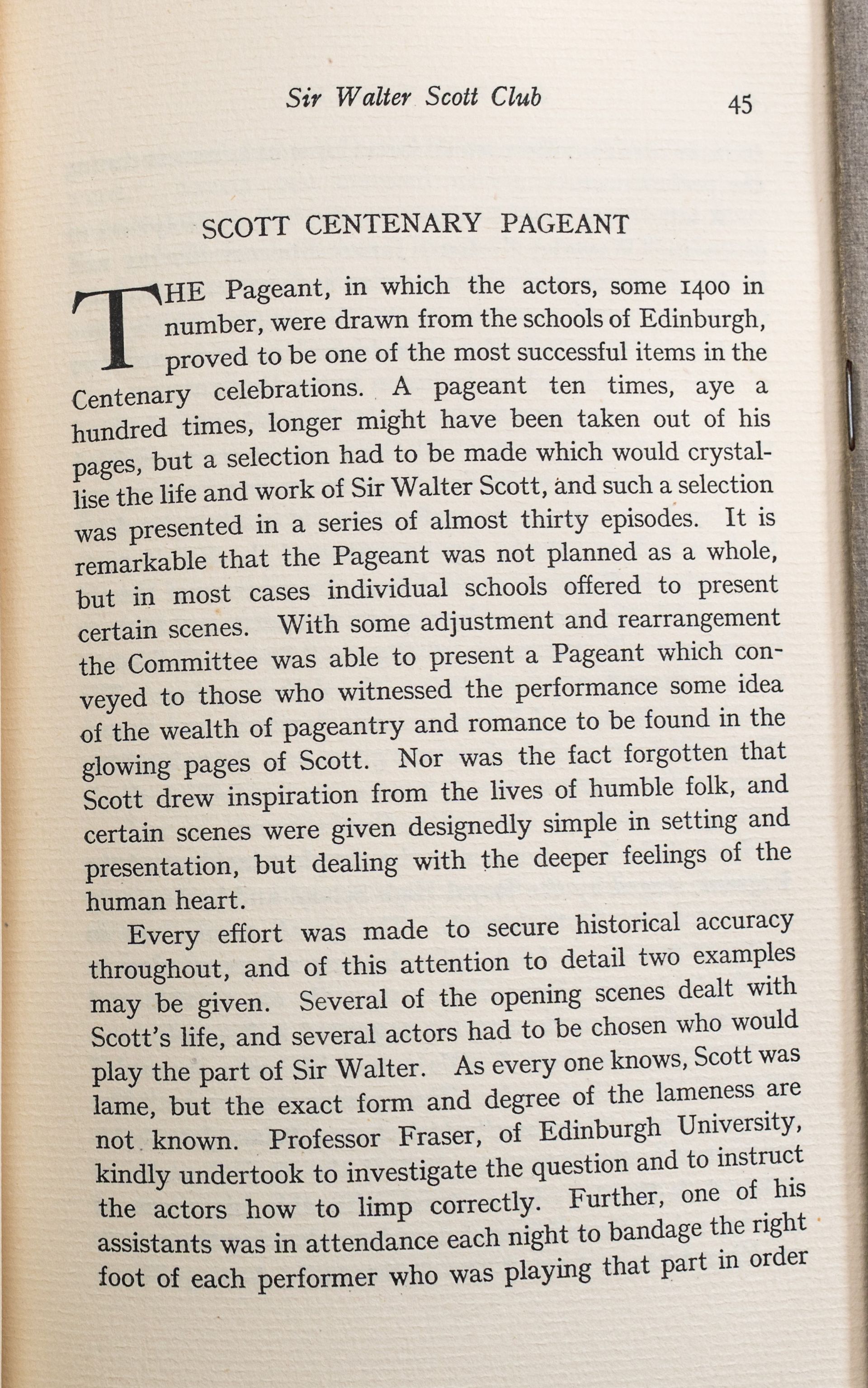The Sir Walter Scott Centenary Pageant
Wednesday 21st September 1932
Summary of the Article:
The pageant, held as part of the Sir Walter Scott Centenary celebrations, was a large-scale performance involving approximately 1,400 actors drawn from Edinburgh’s schools. The goal was to encapsulate the life and works of Sir Walter Scott through a series of around thirty episodes. The Pageant was not a cohesive narrative but instead was divided into various scenes contributed by different schools, each focusing on specific aspects of Scott's life or novels.
The production was meticulously planned for historical accuracy, with attention to small details such as the portrayal of Scott's lameness. Experts ensured that actors playing Scott limped in the correct manner, which added authenticity to the performance. One notable scene depicted Scott as a young boy lying under the walls of a castle, lost in his dreams, which transitions to an encounter between Burns and Scott. The later scenes shifted to Scott’s novels, including grand portrayals of key events such as the "Banquet" from Ivanhoe and the "Battle of Loudon Hill" from Old Mortality, both of which were dramatically presented with intricate lighting and costuming.
The Pageant featured a mix of intimate and grand scenes, from simple depictions of Scott’s life to the large-scale pageantry drawn from his novels. Historical figures like Queen Elizabeth were also included, with dynamic dances symbolizing battles between different groups. Dramatic moments, such as the "Porteous Riot" from The Heart of Midlothian, were presented in highly charged, realistic performances, capturing the intensity of the moment.
The Pageant concluded with a spectacular gathering of characters from across Scott’s works, culminating in a powerful visual tribute to the "Wizard of the North" himself, Sir Walter Scott, surrounded by the creations of his genius.
Interesting Points:
- Historical Accuracy: The production made a concerted effort to remain true to historical details. For example, a special focus was placed on portraying Scott’s limp accurately, with the help of a professor from Edinburgh University.
- Collaborative Effort: The Pageant was a collaborative project involving many different schools from Edinburgh. Each school took on a specific scene, and the overall performance was carefully curated to tell a broader story of Scott's life and works.
- Focus on Simplicity and Emotion: Some scenes were designed to be simple yet deeply emotional, illustrating Scott’s exploration of the human heart. This juxtaposition of grandeur and intimacy was one of the Pageant's strengths.
- Lighting and Visual Effects: The pageant's use of lighting to highlight certain scenes was particularly innovative, contributing greatly to the dramatic impact of the performances.
- Representation of Scottish Culture: The Pageant celebrated not only Scott’s works but also Scottish culture, with traditional music, dance, and costumes, adding a layer of cultural pride to the event.
Overall, the pageant was a significant and successful tribute to Sir Walter Scott, blending historical storytelling with a celebration of Scottish heritage.
Download the [transcript] or read the [bulletin]

Download the [transcript] or read the [bulletin]


